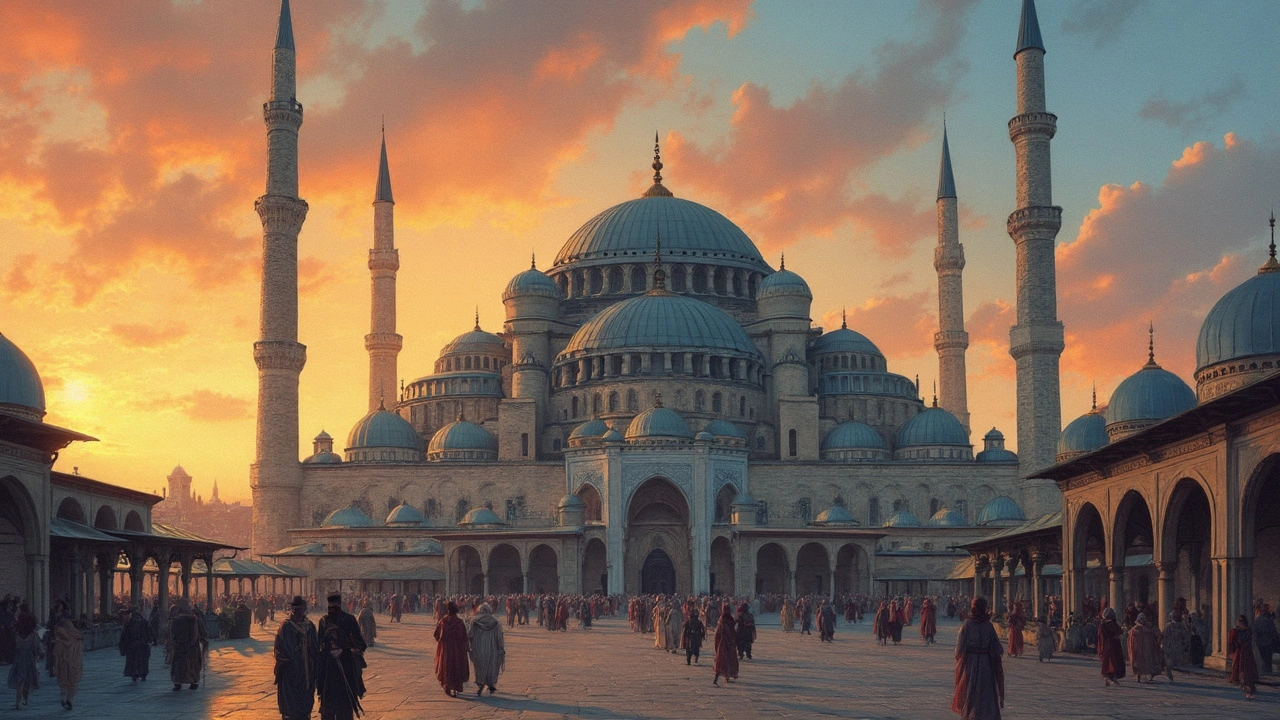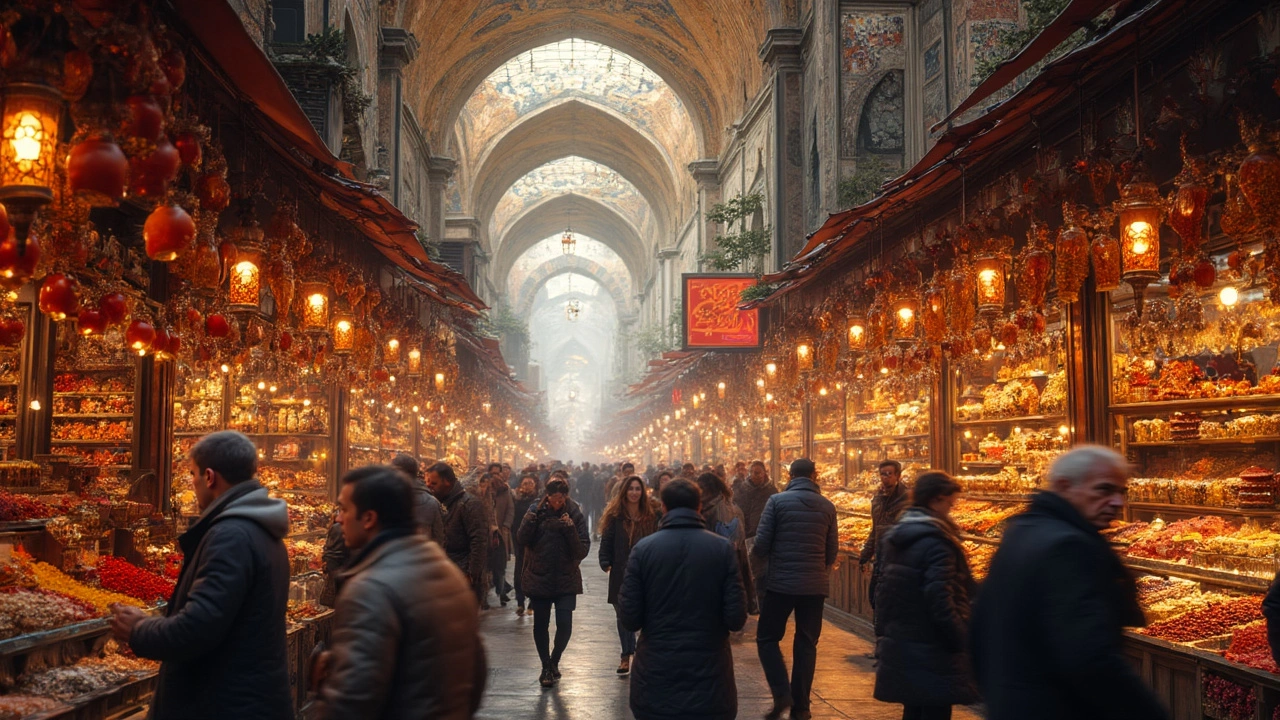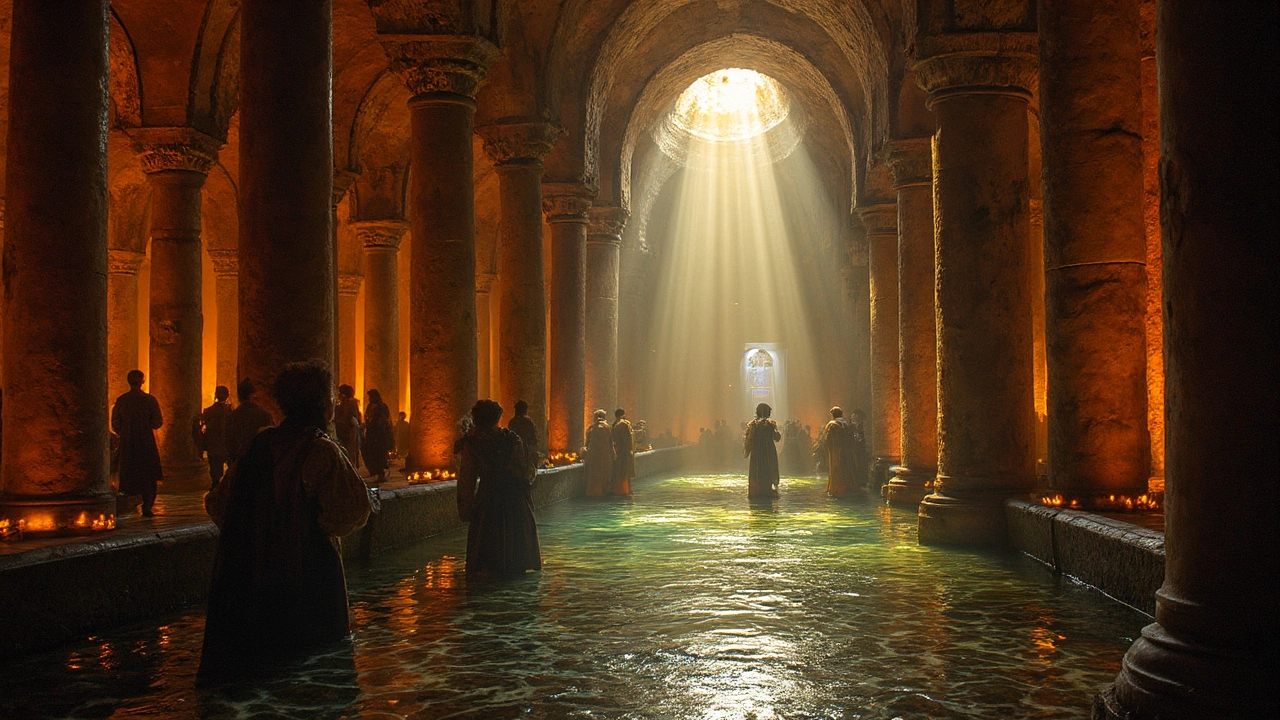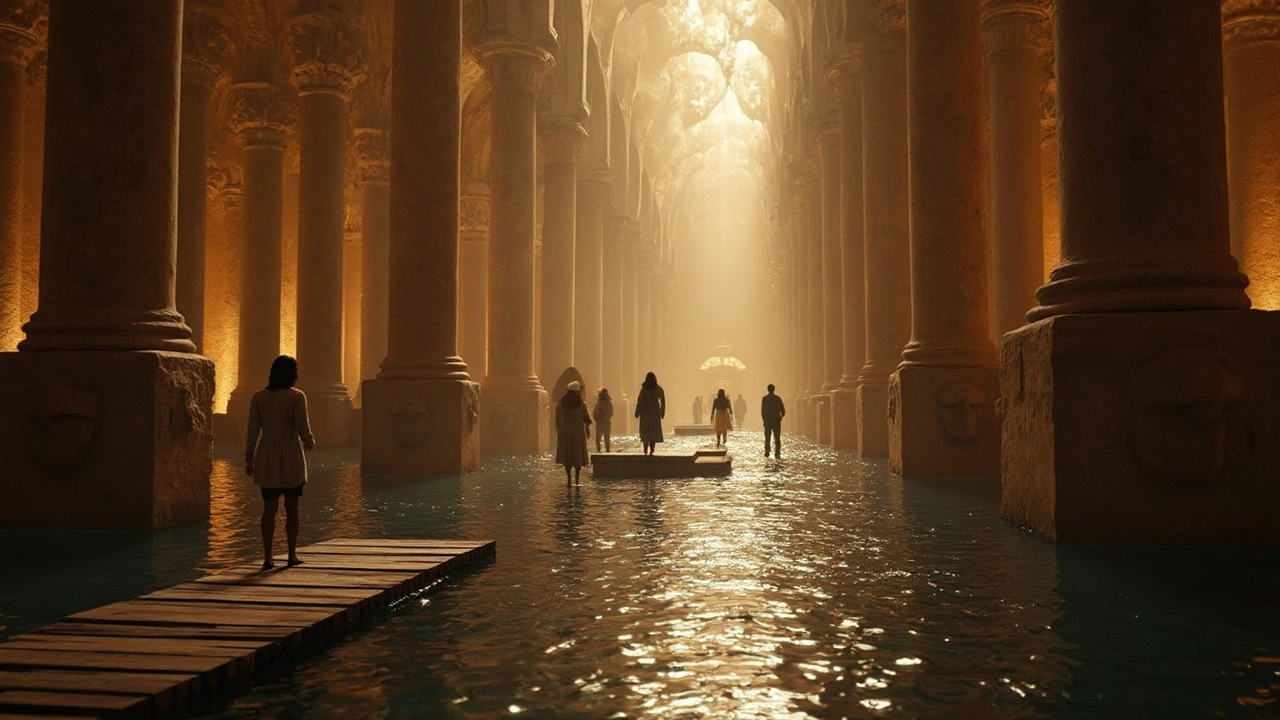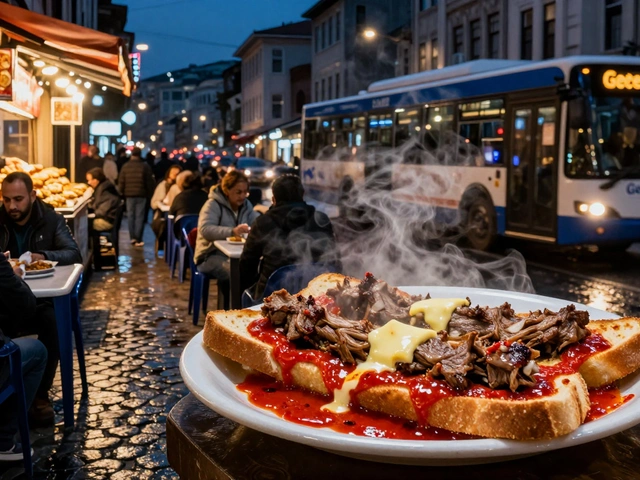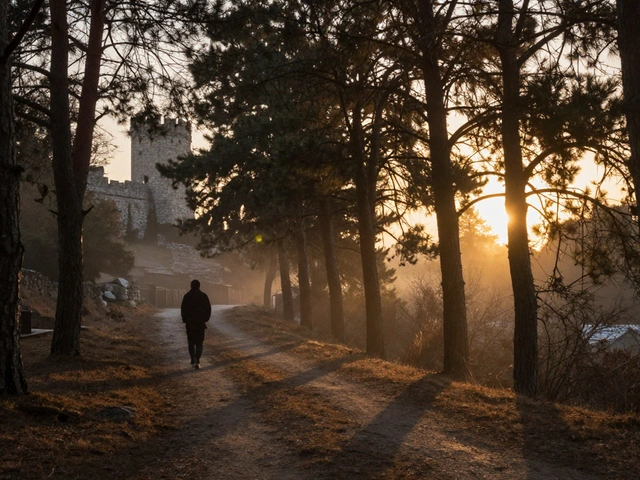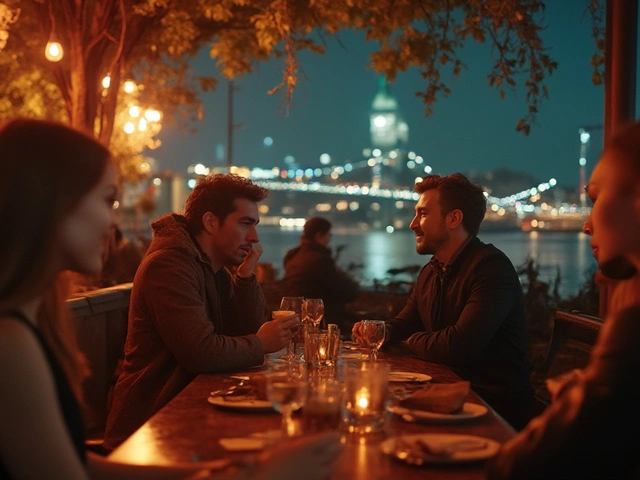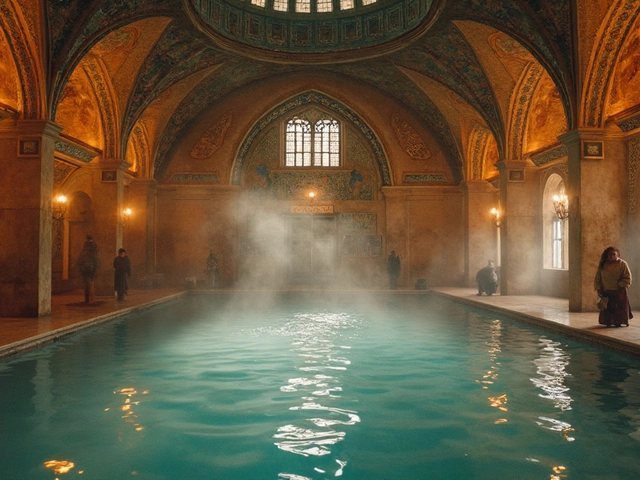Ever wondered how the Blue Mosque became the iconic symbol it is today? Nestled in the heart of Istanbul, this masterpiece dates back to the early 1600s when Sultan Ahmed I envisioned a grand mosque to rival even the Hagia Sophia. Intrigued yet?
Now, let's talk about its jaw-dropping architecture. The mosque, also known as Sultan Ahmed Mosque, wasn't just thrown together overnight. It's a mix of Ottoman and Byzantine styles, complete with six minarets (a little controversy there, because the Great Mosque of Mecca also had six). Walking through it feels like stepping into a masterpiece of art and history.
Beyond its stunning design, the Blue Mosque holds a deep cultural significance. It's not just a tourist spot but a place of worship and community. Imagine the stories those walls could tell—from the footsteps of ancient worshippers to the thousands of tourists today.
- A Glance Back in Time
- Architectural Wonders
- Cultural Significance
- Restorations and Changes
- Visiting Today
- Unexpected Facts
A Glance Back in Time
The Blue Mosque, or Sultan Ahmed Mosque, isn't just an architectural wonder; it's a testament to a time when empires defined the world. It was commissioned by Sultan Ahmed I, a ruler striving to leave his mark on history. Construction began in 1609 and was completed in 1616, a quick turnaround considering its elaborate design and scale.
Why did Ahmed want this mosque? Well, let's set the stage. At that time, the Ottoman Empire was a major power, yet its leader had to contend with challenges both within and beyond its borders. Building something as grand as the Blue Mosque was a way of making a bold statement. Its location, right opposite the Hagia Sophia, was no accident either. By placing it there, Ahmed was creating a visual dialogue between the past Christian Byzantine Empire and the current Islamic Ottoman Empire.
The mosque was designed by Sedefkâr Mehmed Ağa, a pupil of the renowned architect Mimar Sinan, whose influence can be seen throughout the structure. Imagine having the job of creating something that stood out next to architectural landmarks of the time!
Back then, the mosque wasn't just about worship; it served multiple purposes. It included a madrasah (Islamic school), a hospital, a caravanserai (a place for travelers to rest), and even a kitchen to serve the needy. This multifunctional approach was typical and reflected the central role mosques played in everyday life.
Architectural Wonders
When it comes to the Blue Mosque, its design is nothing short of jaw-dropping. You’ve got to see it to believe it! This architectural gem, officially known as the Sultan Ahmed Mosque, blends both Ottoman and Byzantine influences. The architect, Sedefkâr Mehmed Ağa, pulled out all the stops. Imagine crafting something that looks as regal as it feels. That's exactly what he did.
The Blue Mosque boasts six minarets. Yep, there was a bit of drama since Mecca's mosque had the same count at the time. The issue got solved by adding a seventh minaret to the Great Mosque of Mecca. Problem? Solved. Sultan Ahmed, in his quest to rival previous empires, insisted on grandeur, and it shows.
Stepping inside, you’re greeted with a sea of over 20,000 handmade İznik tiles, predominantly blue, which is why it's dubbed the Blue Mosque. The dome—a massive masterpiece—is supported by four elegant, elephant-foot-like pillars, adding to its grandeur.
And those windows? There are over 200 of them, adorned with intricate stained glass that lets in spectacular light, bathing the interior in an ethereal glow. The mosque’s cascade of domes seems to trickle down gracefully. Each section interlocks with the next, creating a harmonious flow that pauses anyone in their tracks.
Interestingly, only the parts with religious insignificance were designed to be meticulously symmetrical. It shows just how much thought went into every single detail, proving that even over four hundred years ago, aesthetics were everything.
- 66 meters tall main dome
- 43 meters in height and 23.5 meters in diameter
- Includes 260 windows that enhance natural lighting
- Equipped with 50 different tulip designs on tiles
Not to mention, there’s a unique placement of the mosque: facing Mecca, of course. But what’s curious is how the mosque fits so perfectly into the Istanbul skyline. It’s like a puzzle piece that’s meant to be there, tying together history, beauty, and spirituality into one breathtaking sight.
Cultural Significance
The Blue Mosque isn't just a pretty face in Istanbul's skyline; it's a living hub of cultural and religious importance. Situated in the heart of Sultanahmet, it’s a place where history and faith collide every single day. What makes it stand out? Well, for starters, it was built not just as a mosque but also as a social complex. Back in the day, it included a hospital, madrasah, and even a hospice, making it a bustling center of community life.
The mosque is still used for prayers five times a day, but it also attracts visitors from all walks of life, giving it a dual role as both a religious sanctuary and a tourist magnet. It’s kind of fascinating how it manages to juggle these two roles seamlessly.
Fun fact: The nickname 'Blue Mosque' comes from the dazzling blue Iznik tiles that adorn its interiors. These tiles are not just decorative; they also have verses from the Quran, acting as a spiritual guide for worshippers. This artistic touch is a nod to the rich Islamic art traditions.
Even if you're not a history buff, you can't miss the way the mosque reflects the Ottoman Empire's grandeur. From its central dome to the four smaller domes and six towering minarets, every inch reflects a blend of Turkish and Islamic architectural brilliance.
Today, it's not just a place to snap a photo but a reminder of how the past intricately weaves into present-day Istanbul. When you step inside, it's like you're joining a tapestry of countless lives and stories that have passed through its halls. And guess what? You're adding your own thread to that rich tapestry.
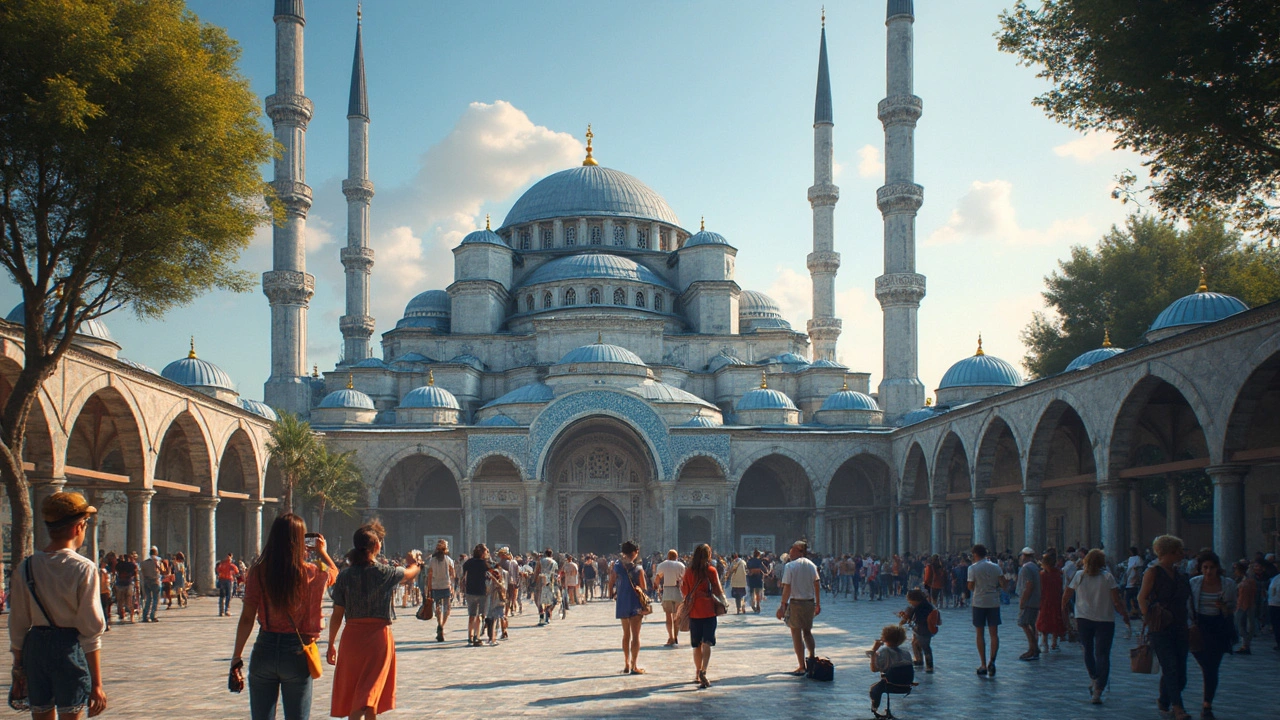
Restorations and Changes
The Blue Mosque hasn't always looked just as it does today. Like an old tapestry with stories woven into each thread, time and weather have left their mark, leading to significant restorations over the years. Keeping this architectural gem in tip-top shape hasn't been a simple task.
One of the earliest major restorations took place in the late 19th century. Sultan Abdulmecid spearheaded efforts to restore the mosque to its former glory, as it had suffered from neglect. Since then, a series of projects have aimed to preserve and protect this treasured structure. In fact, by 2020, the Turkish government kicked off a major restoration project addressing everything from the intricate tilework to the sturdy marble floors.
Navigating the challenges of conserving the mosque’s delicate mosaic tiles, which cover its expansive domes and walls, has required art historians and architects to put on their thinking caps. There's no ‘one-size-fits-all’ solution when it comes to maintaining such historical work.
A fun fact? The mosque actually underwent electrical renovations, modernizing the lighting while still maintaining its ancient aura. Imagine seeing it subtly illuminated against the night sky—it's truly a magical sight.
Staying authentic while accommodating new technologies and modern safety standards is a constant balancing act for restorers. But they’ve been doing an impressive job, ensuring that visitors today can admire the Blue Mosque much as it was intended, while also keeping it fit for future generations.
Visiting Today
Planning to step inside the impressive Blue Mosque? Well, you're in for a treat! While visiting, you'll notice it's not just about the grandeur and history; it's also an active place of worship. The mosque welcomes everyone, but there are a few things you should keep in mind to make the most out of your trip.
First things first: entry is free. Yes, you heard it right! But do remember, as it is a religious site, respectfully follow the dress code. Women should cover their heads and shoulders, and both men and women are expected to wear modest clothing that covers their legs.
Want to avoid crowds? Try visiting early in the morning or later in the afternoon. These are usually the quieter times, giving you a chance to soak in the surroundings without feeling rushed.
Inside, you'll be captivated by the stunning blue tiles that give the mosque its nickname. These Iznik tiles are a sight to behold, reflecting intricate patterns and a unique blend of colors. Also, keep an eye out for the awe-inspiring dome, a perfect Instagram moment!
Don't forget to check prayer times before you go. The mosque is closed to tourists during these times, but they are short, so it's easy to plan around them. Use this time to explore the surrounding Sultanahmet area, full of historical and cultural hotspots.
For a smooth visit, here’s a quick list of must-dos and don’ts:
- Do check the opening hours online before visiting.
- Don’t miss the chance to explore nearby attractions.
- Do bring a scarf or borrow one at the entrance if you're a woman.
- Don’t forget your camera but be discreet when taking photos.
Wrap up your visit with a stroll through the nearby gardens. They offer a chance to relax and reflect, with the majestic mosque as your backdrop.
Unexpected Facts
The Blue Mosque is full of surprises that go beyond its stunning architecture and significant past. Did you know that it was initially a bit of a scandal? When Sultan Ahmed I built it, the mosque had six minarets—just like the Great Mosque of Mecca. The audacity! The solution? They added a seventh minaret to the Mecca mosque to keep its unique status.
Here's something even more intriguing: The mosque isn't just blue. The nickname comes from the 20,000+ handmade ceramic Iznik tiles that adorn its interior. Their blue and white designs create a mesmerizing atmosphere, making the name 'Blue Mosque' just stick.
Ever thought a mosque might be a trendsetter for lighting? Those beautifully lit chandeliers inside originally held ostrich eggs. Why? To repel spiders and prevent cobwebs from forming. Clever, right?
Another surprise? The mosque serves both as a bustling tourist destination and a fully functioning place of worship. Tourists can appreciate its beauty, but during prayer times, the mosque prioritizes its religious significance. It’s a lesson in balance and respect for cultural heritage.
If you're planning a visit to Istanbul, be mindful of the dress code. Visitors are expected to cover their shoulders and knees. For those without suitable attire, the mosque generously provides wraps, ensuring everyone can appreciate this historic gem.
